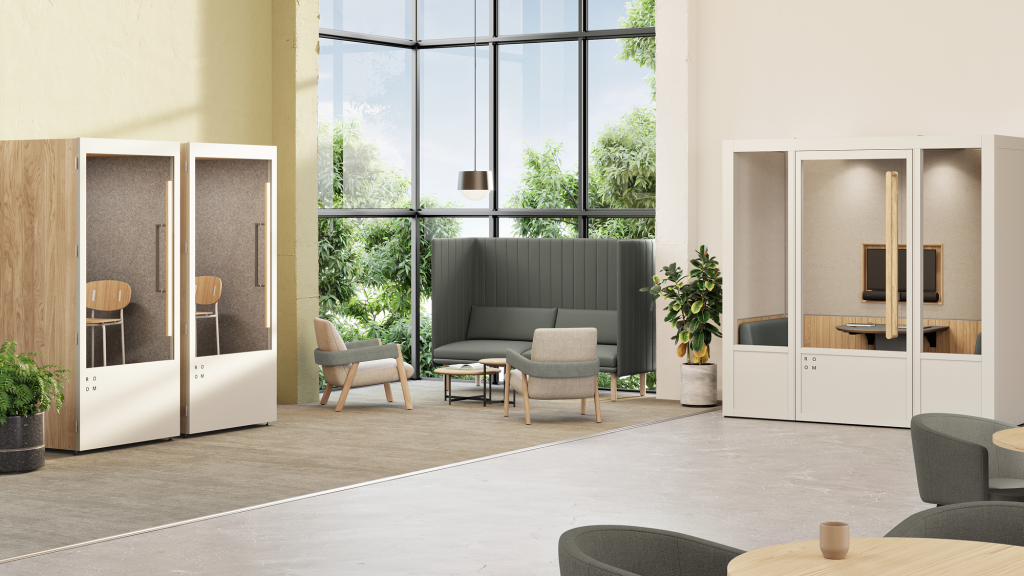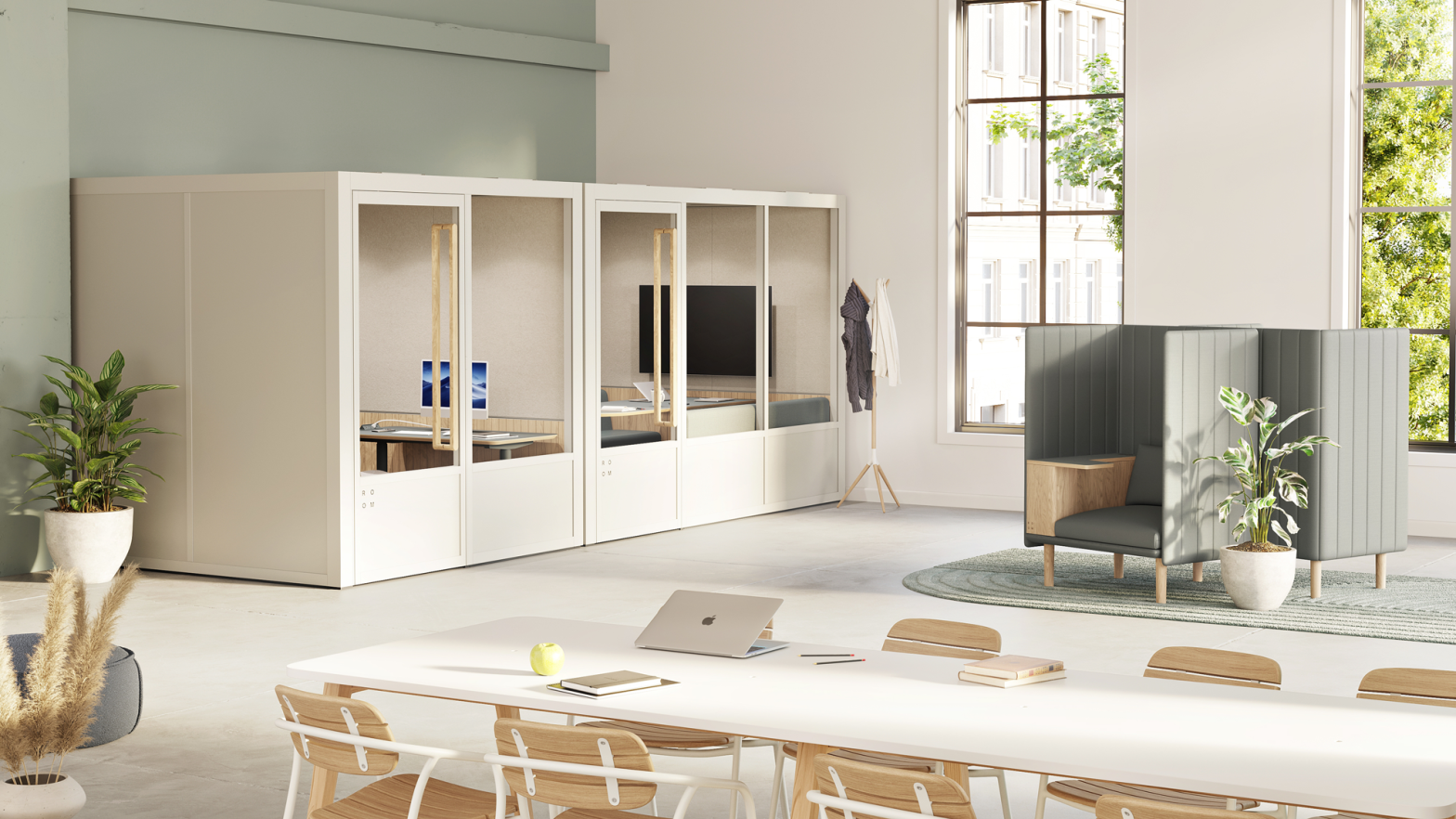ADA accessible, reconfigurable and sustainable, the pre-fab system meets growing demand for flexible workspaces that last.
Seven years after it launched its best-selling phone booths, ROOM is still innovating to meet the demands of today’s flexible workplace with a full floorplate of modular offices.
This month, the New York City company rolled out its new Room Collection, which includes medium-sized and larger-sized prefabricated office pods that accommodate executive offices, expanded team meetings and introduces a series of ADA compliant models. The Collection includes S, M and L series—as in small, medium and large—with each size featuring three different interior configurations, including focus room, meeting room or frame, which is a blank canvas that you can customize.
The Room Collection has been in the works for six years as ROOM designers sought to create a product that’s better than a built-in conference room or private office, complete with soundproof walls, top of the line acoustics and ventilation, no construction necessary.
“ROOM is now a one-stop shop for all things office,” says Justin Dollinger, ROOM’s vice president of product engineering. “We design for sustainability, modularity and simplicity.”
—ROOM
The timing of the launch is ideal. Companies are bringing employees back to the office—but failing, says Dollinger. The reason? Many workspaces haven’t embraced modularity that allows organizations to mix and match various sized products to optimize that real estate. Landlords and business leaders still face inflexible leases and high construction costs that prevent them from upgrading office spaces, while employees have cited a lack of meeting spaces, poor acoustics and back-to-back virtual meetings.
“We started ROOM based on a simple observation,” says Thierry Ondet, ROOM’s managing director. “In open-plan offices, excessive noise and lack of private spaces reduce productivity and morale. Once distracted, it can take 20 minutes or more to refocus, affecting both output and employee retention.”
The Room Collection system offers flexible, comfortable spaces that people want to be inside—fostering concentration and connection, he says.
The turnkey spaces include desks, sofa seating, sustainable soundproofing, ventilation, and lighting controls. They’re also set up for live video-conferencing when you’re ready, including a built-in monitor and 180-degree camera through a partnership with Jabra PanaCast.
—ROOM
As companies increasingly look for ways to make the office sustainable, ROOM fits the bill. The rooms have replaceable parts and recycled materials, including PET from plastic bottles and 100% wool acoustic walls. To date, ROOM has diverted more than 38 million plastic bottles from the landfill.
Traditional construction can involve months of permits, drywall, mess and subcontractors, and it can cost an estimated 30% more than ROOM products, which can be professionally and quietly installed in just three hours. (It’s best-selling Phone Booths take less than 60 minutes to install with just two team members).
“Construction creates a lot of waste, and our first customers are still using ROOM Phone Booths they bought back in 2018,” says Dollinger. Most parts can be easily swapped out—say, a door handle, if it gets scratched or damaged. ROOM products, he says, are built to last.

—ROOM
The new series should be popular in larger cities with high construction and commercial real estate costs and where companies seek flexibility and shorter lease agreements. Fluid office design will continue to be in demand, too, as more employers settle into three- to four-day-a-week flexible work schedules for the office.
“We really believe the future of work is flexible,” he says. “Modularity—and ROOM—are good for that.”
